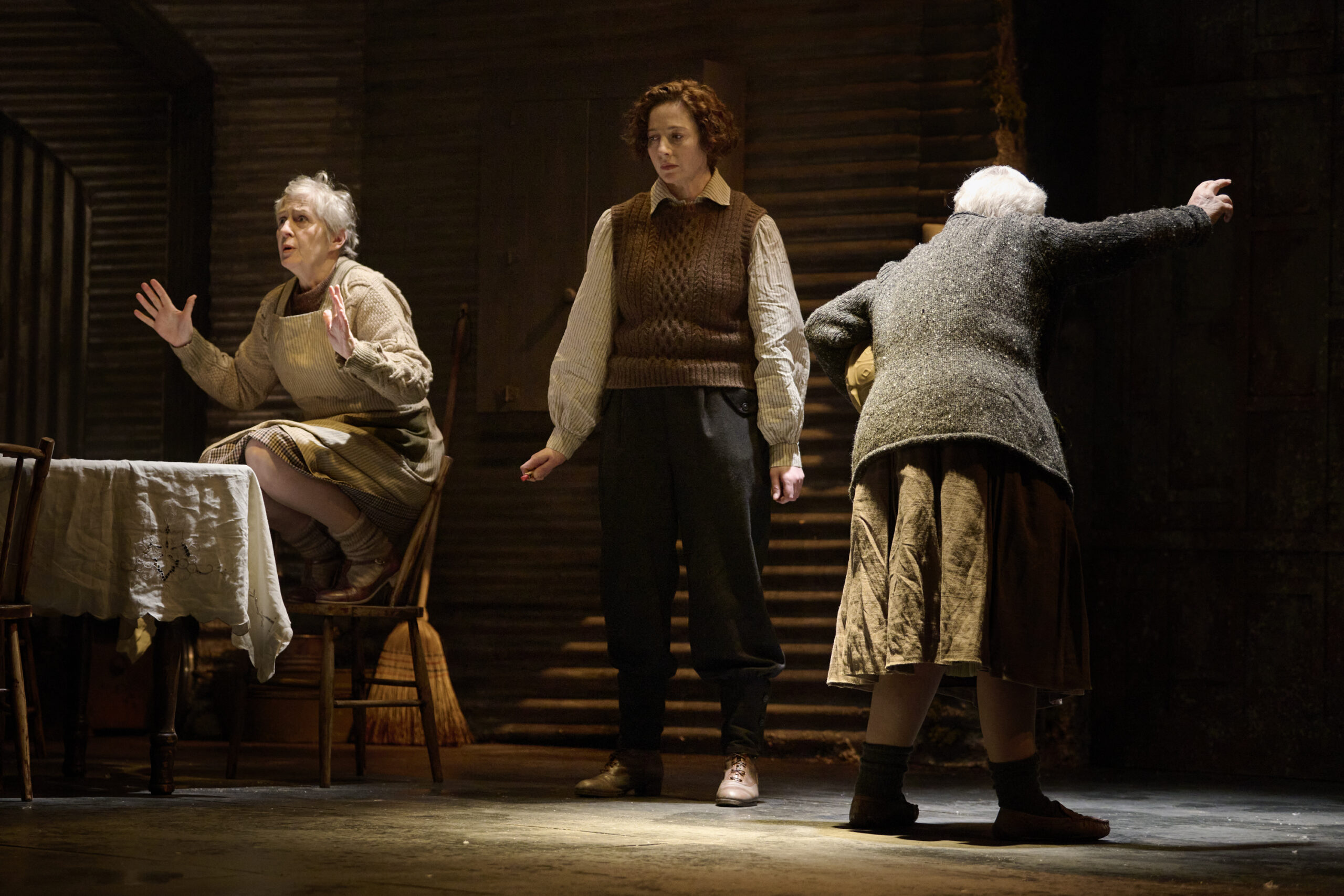The New Electric Ballroom marks a dazzling and long-awaited debut on the Gate’s stage for renowned playwright Enda Walsh. Known for such works as Disco Pigs, Misterman, Ballyturk, Medicine and others, Walsh masterfully brings together poetic language, dark humour and the absurdism and painful triviality of human experiences. The New Electric Ballroom is no exception.
Dealing with questions concealed in human souls, it is a brilliant text brought to life by a well-chosen cast, quotes from which will ring in the audience’s heads days after the performance. “We don’t want to be alone but we’re alone”, the text says.
The New Electric Ballroom revolves around the lives of three sisters – two older ones in their sixties, Breda (played by Barbara Brennan) and Clara (played by Jane Brennan), and Ada (played by Orla Fitzgerald), who is in her forties. Marty Rea portrays the fishmonger Patsy.
The decision to cast the Brennan sisters, who hail from one of Ireland’s biggest theatrical dynasties, as the older women on stage is an effective one, if not entirely groundbreaking. The Gate has done this before in their 1990 production of Anton Chekhov’s Three Sisters, which saw Sorcha, Niamh, and Sinéad Cusack as the titular three sisters alongside their father Cyril Cusack. Even still, the intimacy between Breda and Clara was palpable, and it is hard to say how much of it resulted from the actors’ talent and experience and how much from their blood ties.
The story follows the older women as they recall and reenact episodes from their past, reliving the pain and heartbreak of one single night, until it becomes their reality. Jane Brennan’s Clara is tenderly childish, trying to escape from the fatality of real life by blocking her ears and mumbling as many of us did when we were kids. All she wants is to eat a piece of the pink fairytale-like cake, but she never gets to.
Breda, although rigid and grumpy, is played sympathetically by Barbara Brennan. The younger sister Ada appears as a kind of on-stage director, wishing to be in control of the play, the sisters and even time itself, until Fitzgerald exposes her vulnerability in a moving manner.
The domestic kitchen space is invaded by fishmonger Patsy again and again as he barges in with his fish tray to tell the town’s gossip. At first glance, he provides comic relief to the bitter stories of the older sisters. With Rea’s charismatic Northern accent, not a word is wasted in Patsy’s monologues. Yet, Patsy’s tragedy shows itself as the action progresses. His final explanation to Ada is the moment during which the audience went completely breathless. Rea uncovered both the humorous and the sorrowful sides of a “man whose only companion is fish”.
The set and costume designer Kat Heath outdid herself. The one-room space is framed by iron walls that turn the kitchen into a tin can in which the sisters are trapped. The side panels work effectively towards the end, reflecting the misty pink light coming from the open gates. The sisters’ portal into the outside and the past is the closet where fantastical princess-like dresses magically appear for the women to wear.
The ceiling is made of fishing nets and colourful buoys that later turn into bright disco balls thanks to the impressive lighting design by Ciarán Bagnall. The changes in lighting – from blue to yellow, zooming in and out, softening and focusing in – mirror the tone of the story being told at that particular moment. The music, carefully chosen by Katie Richardson, will resonate with all who at least once stepped on the dance floor of a ballroom. The final whistle of the kettle is this play’s sound of a breaking string.
Emma Jordan’s directing is rigorous, taking under control the surrealism and randomness of Walsh’s writing. The New Electric Ballroom provides an honest insight into the Irish sexagenarian as well as the rituals of rural Irish life. Told mostly from a female perspective, this play sheds light on what is hidden under the apparent grouchiness and naivety of our beloved older sisters, mothers, and grandmothers: the heart, aching and wanting.
The New Electric Ballroom runs at the Gate theatre until April 1st.








